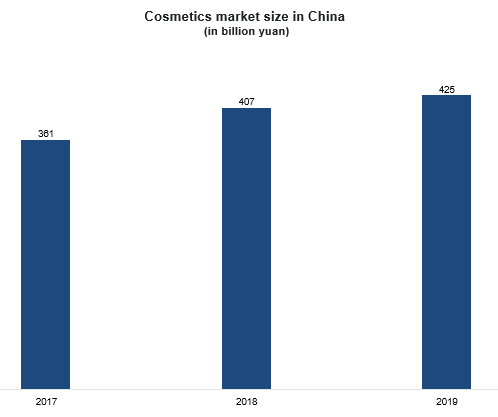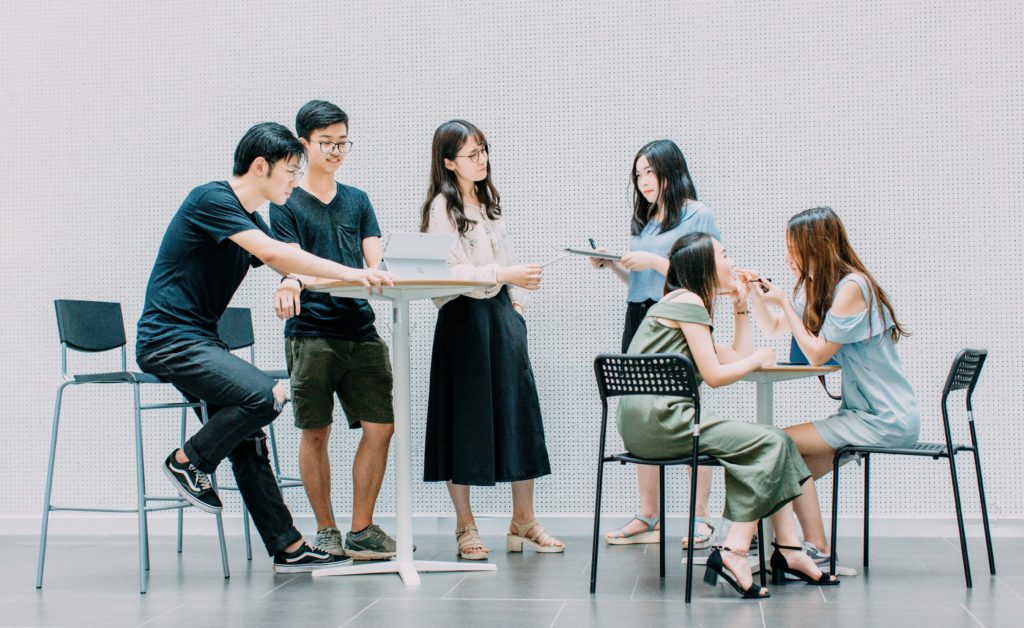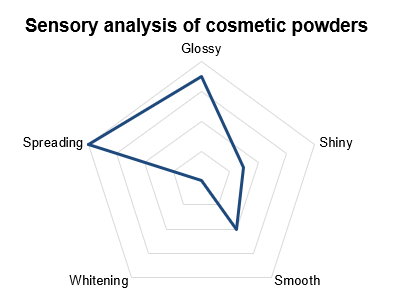What is sensory research?
Sensory research is a method used to measure, analyze and interpret responses to characteristics of products through the organs of sight, smell, taste, touch and hearing. The point of cosmetics sensory evaluation in China is for the target group of consumers to express a degree of liking for a particular cosmetic product. These consumers are impartial and have no prior technical knowledge of the products. Cosmetics sensory testing in China offers methodologies that guide research and development processes. The main benefit of cosmetics sensory research in China is the use of the collected data to help a brand understand what changes to made before introducing a product to the market. In addition to aesthetic appreciation, reviews can also include the taste, smell, or texture of a product. Therefore, the brand can develop a strategy to succeed before promoting its cosmetics to a wider audience. It is especially important, as the cosmetic market in China shows stable growth.

The process for cosmetics sensory research in China:
Step 1: Preliminary desk research
Desk research aims to review the results of previous research in order to gain a broad understanding of a given area. In the course of desk research, Daxens team collects data from publicly available information sources, processes them and consolidates them into a report. Daxens team also selects the most appropriate analysis for each research project. Sensory analysis in China has two broad characteristics.
Subjective methods, which provide personal information about acceptability, liking, or preference and usually include untrained evaluators such as customers. Subjective methods, sometimes called consumer tests, are particularly effective.
Objective methods include descriptive tests and discrimination tests, sometimes also called difference tests.
Step 2: Deciding criteria and questions to ask participants
Daxens team will help to clearly define the research question and identify research participants as well as methods of results comparison for the cosmetics sensory research in China.
It is necessary to define research questions that are suitable for study design. For example, the visual characteristics of products and packages, the sound emitted when opening and closing, the smell of the product, sometimes the taste, feelings through the touch – all these are the most important criteria of the cosmetics sensory evaluation in China.
Because consumers are emotionally attached to their cosmetics, sensory characteristics can create an emotional connection between the consumer and the product. Before any cosmetics sensory research in China, experts should choose the sensory attributes which are appropriate for the analyzed product.
For example, texture analysis evaluates the mechanical properties of a cosmetic. Texture analysis can characterize or compare semi-solid cosmetic products.
Step 3: Finding participants
Daxens uses four principles when finding participants of the cosmetics sensory research in China.
First, targeting. It is reaching the right audience. We clearly define the intended participants in your project. If you we do the research for a company or product, the target audience usually represents their potential and existing customers. The participants of the cosmetics sensory testing in China are usually users and fans of this cosmetics.
Second, verification – we make sure that we have hired people in a reliable and unbiased manner. In addition, we create a preliminary survey to identify respondents and compile a list of true survey participants.
Third, incentives – offering incentives that improve survey response rates and ensure the right number of participants in the cosmetics sensory evaluation in China.
Maintaining – Daxens team makes sure that we can continue the cosmetics sensory research in China in the long term.
Building a database of potential research candidates takes time, but ultimately creates a robust process for quickly finding research participants.
Step 4: Performing the cosmetics sensory research with participants

There are many variations of cosmetics sensory research in China. An example would be the cosmetics sensory research of powder by focus group in China.
First, the sample set must be large enough to provide a reliable representation of the entire product category. Also, it is necessary to develop terminology and assessment protocol through a consensual approach. The assessment protocol consisted of four steps:
1. The focus group assess the appearance of each powder.
2. The focus group rubs the powder between thumb and forefinger to assess its texture.
3. Participants rub each powder in ten circular movements with a diameter of 2 cm in the upper arm to evaluate the application of the cometic product.
4. Participants of the cosmetics sensory evaluation in China rub the palm of their hand, on which they previously applied each product with their fingertips, to assess the feeling after.
Step 5: Follow up questions and discussion participants
The main advantage of focus group discussions is that they allow to explore the broader context of how consumers perceive a product.
Such information is an important addition to objective qualitative data obtained using sensory methods. Follow up questions shed light on deeper insights and hidden connections.
They are necessary when a participant is not sure or has difficulty formulating thoughts. Follow up questions are also helpful in case of difficult questions. Retelling the question from a different point of view, you can get complete information about the opinion of the participant about the investigated product.

The final step in the cosmetics sensory testing in China is to analyze the research results. The Daxens team categorizes the results and analyzes the rating of each cosmetic product.
Experts also analyze the results of all sensory parameters and form subgroups. Sensory analysis methods require accurate product recognition and potential panel repeatability.
Hence, research participants receive a list of selected attributes. With these methods, participants cannot freely choose the criteria for evaluating products. The Daxens team analyzes sensory data using scientometrics, a specialized area of statistics.
We evaluate the data using a variety of software and many complex formulas for reliable results.
In addition, Daxens analyzes the relationship between product data, sensory attributes and consumer preferences using techniques such as principal component analysis (PCA), partial least squares regression (PLS) preference mapping, or joint analysis.
This helps our team to identify scores of “liking factors” and predict consumer behavior after a product launch. The team visually displays the results to facilitate interpretation and communicate results, for example using sensory (PCA) maps or spider web diagrams.
What Daxens will provide for your cosmetics sensory evaluation in China
Daxens will care about every aspect of the cosmetics sensory testing in China. It includes: participants, facilities, venue, moderation, data collection and analyzing and report with visual representation.
Contact us to schedule a call with our consultants.
